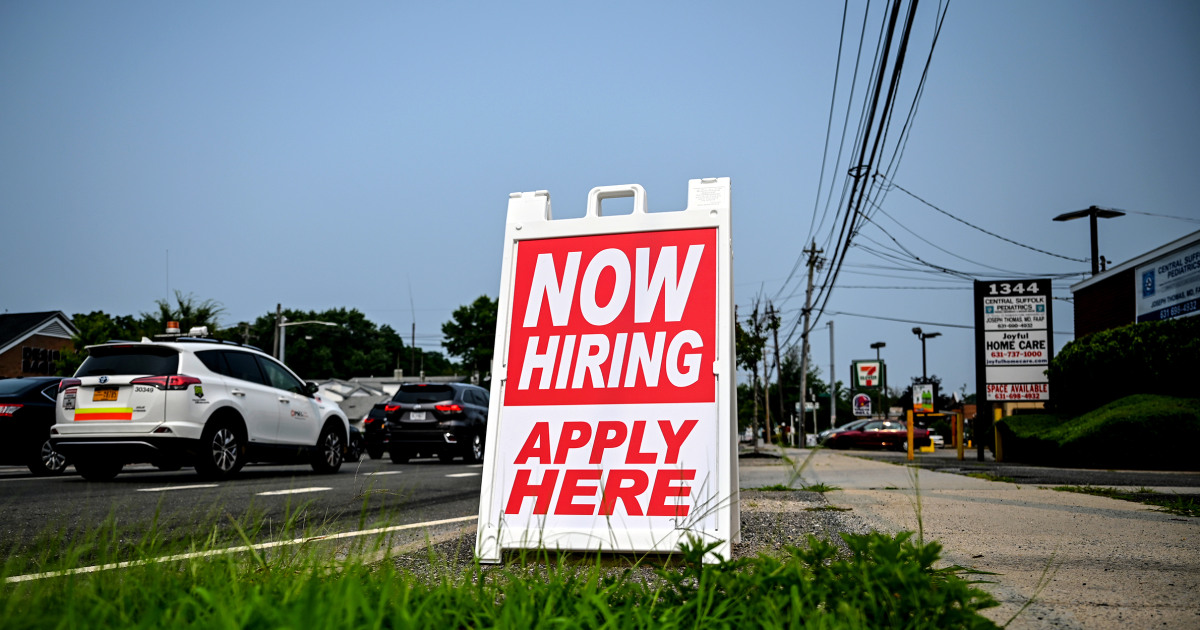What makes the new monthly jobs report less reliable than most

Expectations heading into this week showed projections of about 110,000 new jobs having been added in the United States in October. As it turns out, according to the new report from the Bureau of Labor Statistics, the totals were actually quite a bit worse than that. NBC News reported:
The United States added just 12,000 jobs last month, a figure economists say was impacted by two hurricanes and a strike. Yet, even with those caveats, the report pointed to a cooling labor market. The latest payrolls figure marked the fewest monthly job gains since December 2020, during the depths of the Covid pandemic, with the Bureau of Labor Statistics saying the U.S. effectively added no new net payrolls last month.
The U.S. unemployment rate, meanwhile, was unchanged at 4.1%.
At first blush, this might look like a disaster. After years of robust job growth, seeing new hires drop to a four-year low, at least superficially, appears dreadful.
But this is one of those rare months in which the top lines of the BLS report only tell part of a larger story. The New York Times published this report before the new data reached the public:
The last couple of months have seen an unusual amount of disruption. First came the Boeing strike in September, taking some 35,000 workers off payrolls, plus another 6,000 from smaller strikes. Then came Hurricanes Helene and Milton, which spiked unemployment claims by about 35,000 in early October.
The article added that a drop-off in hiring “wouldn’t be an accurate representation of employers’ appetite to hire.”
In fact, economists and market analysts have issued plenty of warnings this week, explaining that the jobs report would paint a misleading picture. The Associated Press reported a few days ago that the report would “include some of the most distorted monthly employment figures in years.”
In other words, if all you see is the top line, you’re missing the relevant context.
As for the bigger picture, let’s also circle back to previous coverage to put the data in perspective. Over the course of the first three years of Donald Trump’s presidency — when the Republican said the U.S. economy was the greatest in the history of the planet — the economy created roughly 6.38 million jobs, spanning all of 2017, 2018 and 2019.
According to the latest tally, the U.S. economy has created roughly 16.5 million jobs since January 2021 — more than double the combined total of Trump’s first three years. (If we include the fourth year of the Republican’s term, the data looks even worse for him.)
For some additional context, consider job growth by year over the past decade, updated to reflect the latest data revisions:
2013: 2.3 million
2014: 3 million
2015: 2.7 million
2016: 2.3 million
2017: 2.1 million
2018: 2.3 million
2019: 1.98 million
2020: -9.3 million
2021: 7.2 million
2022: 4.5 million
2023: 3 million
Ten months into 2024: 1.7 million
This post updates our related earlier coverage.
Related
A top recruiter says sports marketing roles are hot right…
Jobs are opening up in the sports industry as teams expand and money flows into the industry.Excel Search &
Public employees and the private job market: Where will fired…
Fired federal workers are looking at what their futures hold. One question that's come up: Can they find similar salaries and benefits in the private sector?
Mortgage and refinance rates today, March 8, 2025: Rates fall…
After two days of increases, mortgage rates are back down again today. According to Zillow, the average 30-year fixed rate has decreased by four basis points t
U.S. economy adds jobs as federal layoffs and rising unemployment…
Julia Coronado: I think it's too early to say that the U.S. is heading to a recession. Certainly, we have seen the U.S. just continue t










